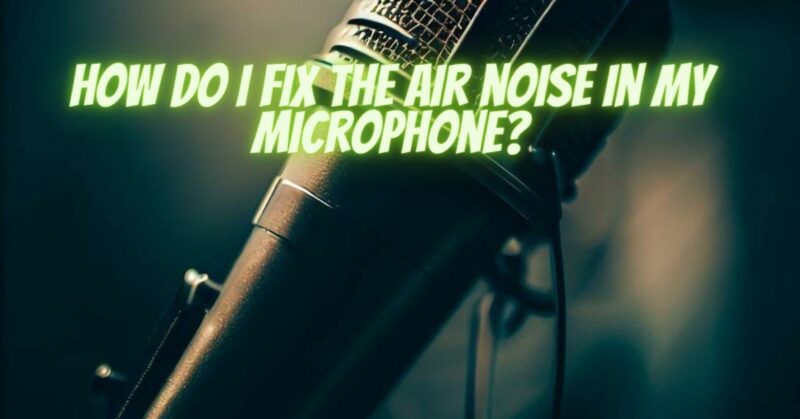Air noise, often referred to as wind noise or plosives, can be an annoying issue when recording audio with a microphone. It is caused by the movement of air or bursts of breath directly hitting the microphone’s diaphragm, resulting in unwanted noise and distortion. Fortunately, there are several techniques and tools you can use to minimize or eliminate air noise in your microphone recordings. In this article, we will explore some effective solutions to fix air noise issues.
- Use a Pop Filter or Windscreen:
One of the most common and effective ways to reduce air noise is by using a pop filter or windscreen. These accessories act as physical barriers between the microphone and the source of the air, such as breath or wind. Pop filters consist of a mesh screen that helps diffuse the airflow, while windshields or foam covers provide a layer of protection against gusts of air. Position the pop filter or windscreen a few inches away from the microphone to ensure optimal performance.
- Adjust Microphone Placement:
Proper microphone placement can also help reduce air noise. Position the microphone slightly off-axis from the direction of the air source. For example, if you are speaking or singing into the microphone, angle it slightly to the side, away from your mouth. This technique allows the air to pass by the microphone rather than directly hitting the diaphragm.
- Use a Microphone with Built-in Wind Noise Reduction:
Some microphones, particularly those designed for outdoor or live performance use, come with built-in wind noise reduction features. These microphones often have specialized diaphragm designs or integrated windshields to minimize the impact of air noise. Consider using a microphone specifically designed for outdoor or windy environments if you frequently encounter air noise issues.
- Control Your Breathing:
In cases where air noise is caused by your breath while speaking or singing, controlling your breathing technique can help mitigate the issue. Practice proper breath control and avoid exhaling forcefully or directly into the microphone. Take deeper breaths from your diaphragm rather than shallow breaths from your chest. This technique can reduce the intensity of the air hitting the microphone and minimize air noise.
- Utilize Digital Noise Reduction Tools:
If you are dealing with persistent air noise in your recordings, digital noise reduction tools can be used during post-production to help eliminate or reduce the noise. Software plugins or audio editing programs often offer noise reduction features that can analyze and remove unwanted noise from your recordings. However, it’s important to use these tools with caution, as excessive noise reduction can affect the overall sound quality of your recording.
Conclusion:
Air noise can be a frustrating issue when using a microphone, but there are several techniques to address and minimize it. Using a pop filter or windscreen, adjusting microphone placement, utilizing microphones with built-in wind noise reduction, controlling your breathing technique, and employing digital noise reduction tools during post-production can all help fix air noise problems. Experiment with these solutions to find the best combination for your specific recording environment and microphone setup. By implementing these techniques, you can achieve cleaner and more professional-sounding recordings, free from unwanted air noise.

